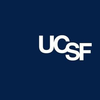
Overview
Established in 1864, the University of California, San Francisco is a non-profit public specialized higher education institution located in the urban setting of the large city of San Francisco (population range of 500,000-1,000,000 inhabitants), California. This institution also has branch campuses in Berkeley, Davis, Irvine, Los Angeles, Merced, Riverside, San Diego, Santa Barbara and Santa Cruz. Officially accredited by the WASC Senior College and University Commission, University of California, San Francisco (UCSF) is a small sized (uniRank enrollment range: 3,000-3,999 students) coeducational US higher education institution. University of California, San Francisco (UCSF) offers courses and programs leading to officially recognized higher education degrees such as bachelor's degrees, master's degrees and doctorate degrees in several areas of study. See the uniRank degree levels and areas of study table below for further details. This 161-year-old US higher-education institution has a selective admission policy based on entrance examinations. International applicants are eligible to apply for enrollment. UCSF also provides several academic and non-academic facilities and services to students including a library, housing, sports facilities, financial aids and/or scholarships, study abroad and exchange programs, online courses and distance learning opportunities, as well as administrative services.
University Snapshot
Control
![]() public
public
Entity
![]() non-profit
non-profit
Size
![]() small sized
small sized
Selectivity
![]() not reported
not reported
University Identity
| Name | University of California, San Francisco |
|---|---|
| Name (English) | |
| Name (Non Latin) | |
| Acronym | UCSF |
| Founded | 1864 |
| Motto | Fiat Lux Let there be light |
| Colours | UCSF teal |
| Mascot | Bear |
| Screenshot |  |
| Video Presentation |
University Location
| Address | 500 Parnassus Avenue San Francisco 94143-0244 California United States |
|---|---|
| Location Map and Satellite View | |
| (415) 476 9000 | |
| (415) 476 9690 | |
| Other locations | Berkeley, Davis, Irvine, Los Angeles, Merced, Riverside, San Diego, Santa Barbara and Santa Cruz |





Social Media
Introduction
Social media can be a powerful tool for Universities to communicate with current students, alumni, faculty, staff and the wider community. But how can social media be important for prospective students? Read our article about the importance of Social Media for universities and prospective students to learn more.
Social Media
uniRank publishes brief reviews, rankings and metrics for some of University of California, San Francisco's social media channels as a starting point for comparison and as an additional selection tool for potential applicants.
University of California, San Francisco's Facebook page review
University of California, San Francisco's X page review
University of California, San Francisco's Youtube page review
University of California, San Francisco's Instagram page review
University of California, San Francisco's official LinkedIn profile
n.a.